
 |
|
|
Fruits
Volume 60 Number 4 Date 05/14/2015 PLUM CURCULIO - Apple growers are advised to begin examining early season varieties for crescent-shaped oviposition scars and adult weevils. Earlier warm temperatures during bloom may have prompted the beetles to move into orchard perimeter trees, and activity is expected to increase as evening temperatures warm above 60°F. An insecticide application directed against the adults at petal fall is the conventional form of control when the economic threshold of one oviposition scar or one adult weevil is exceeded. Organic options include PyGanic (pyrethrin) applied to the outer rows and Surround WP (kaolin) on the interior trees. Any treatment targeting the plum curculio should be applied on a warm night when the weevils are most active to maximize efficacy and reduce exposure to pollinators. Scouting multiple times per week will be required to effectively assess the duration of weevil activity and the extent of infestation into orchard interiors. CODLING MOTH - Emergence began this week in a few eastern Wisconsin apple orchards. Moth counts were very low and the "biofix", or first sustained male moth capture, was not established. Codling moth flight occurs consistently between 5:00 and 10:00 pm in Wisconsin, and winds must be below three mph and temperatures above 62°F during these hours for mating to occur. Since evening temperatures may be conducive for moth activity over the next few days, close monitoring of traps is suggested until the biofix is documented. REDBANDED LEAFROLLER - Counts are expected to decline soon in most orchards as the first flight concludes. The average count this week was 67 moths per trap, which compares to 108 last week and 56 per trap the week before. Egg hatch is occurring and larvae are emerging across the southern and central counties. SPOTTED TENTIFORM LEAFMINER - The generally lower numbers of moths captured during the May 7-13 reporting period signals most apple orchards are in between the first and second flights. Populations in the southern half of the state consist mostly of the early-stage sapfeeder larvae. The recommended scouting procedure is to sample 10 terminals and fruit spurs per tree on 2-3 trees per orchard block 10-14 days after a peak flight has occurred. Sapfeeder mines should be noticeable on the undersides of leaves. The economic threshold is one mine per 10 leaves. OBLIQUEBANDED LEAFROLLER - The first flight of moths will likely begin by late May. Apple growers who have experienced late-season OBLR problems in recent years should consider setting additional traps now to identify problem areas and help determine where to direct management efforts later this season. Scouting for foliar feeding is also suggested at this time. Control may be warranted if feeding damage affecting more than 5% of terminals or 3% of fruit clusters is observed. -- Krista Hamilton, DATCP Entomologist 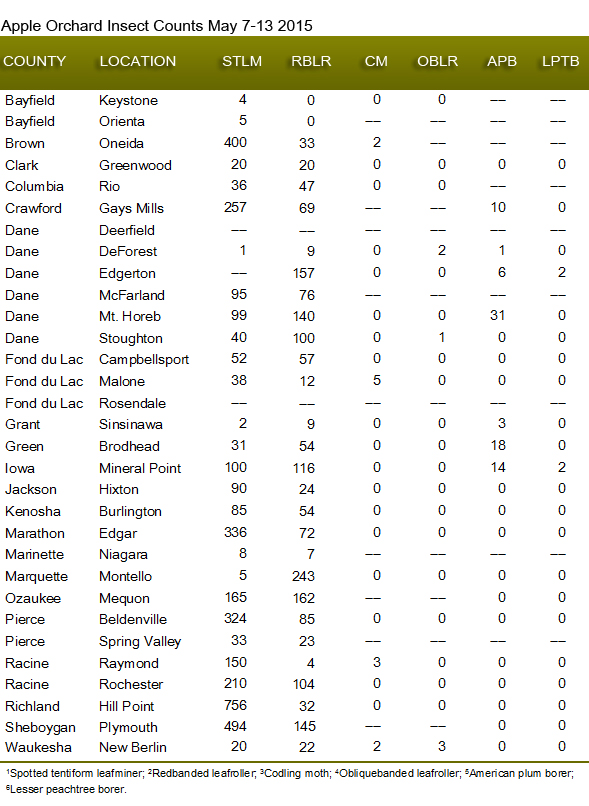
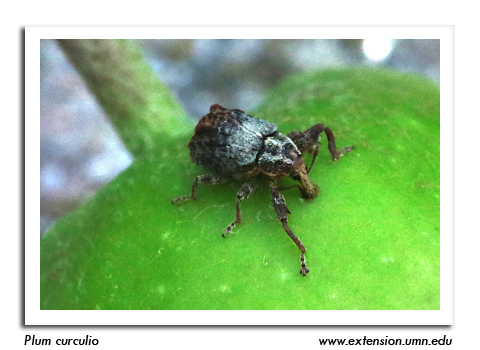
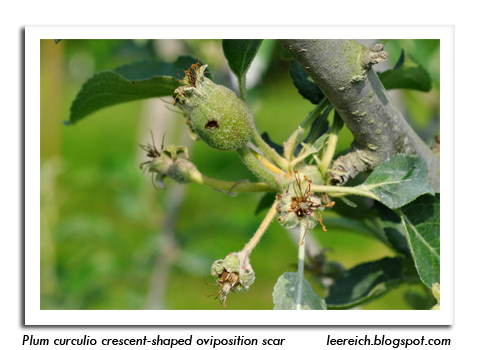
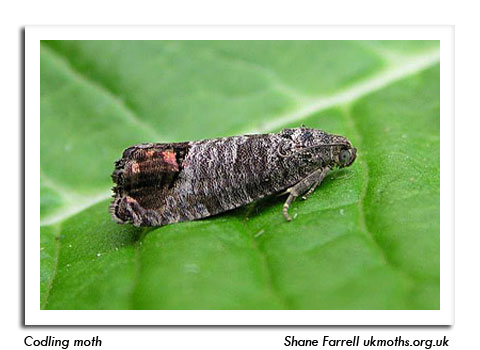

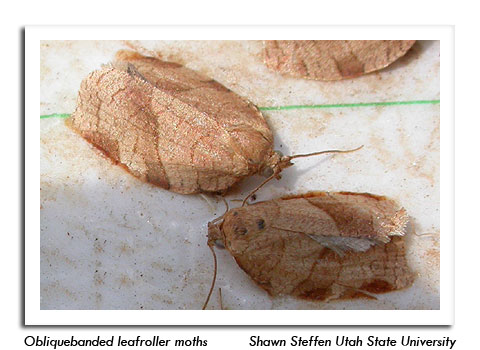
|
|
|